my country has a vast territory and a long history, and a variety of cultures have been formed in the long-term historical development. As cultural resources are industrialized by tourism projects, different types of cultural tourism have emerged as the times require. At present, China’s cultural tourism industry is in the growth stage. With the continuous standardization of policies and supervision, the market demand for cultural tourism is gradually released. .
01 Current status of cultural tourism industry
(1) The tourism industry is booming and tourism investment continues to grow
According to the latest data from the Data Center of the Ministry of Culture and Tourism, in 2018, the number of domestic tourists was 5.539 billion, a year-on-year increase of 10.8%. The number of domestic tourists in my country has been increasing year after year, and the demand for domestic tourism has increased.

The overall situation of investment and financing in the tourism industry in 2018 is as follows. According to the latest data from the National Tourism Administration, the total tourism revenue in 2018 was 5.97 trillion yuan, a year-on-year increase of 10.5%. An increase of 3.02 trillion yuan over 2013, with an average annual compound growth rate of 15.14%; in 2018, domestic tourism revenue was 5.13 trillion yuan, an increase of 2.51 trillion yuan over 2013, with an average annual compound growth rate of 14.38%. In 2018, the comprehensive contribution of the national tourism industry to GDP was 9.94 trillion yuan, accounting for 11.04% of the total GDP. It is expected that the national tourism revenue will continue to maintain a steady growth trend in 2019.

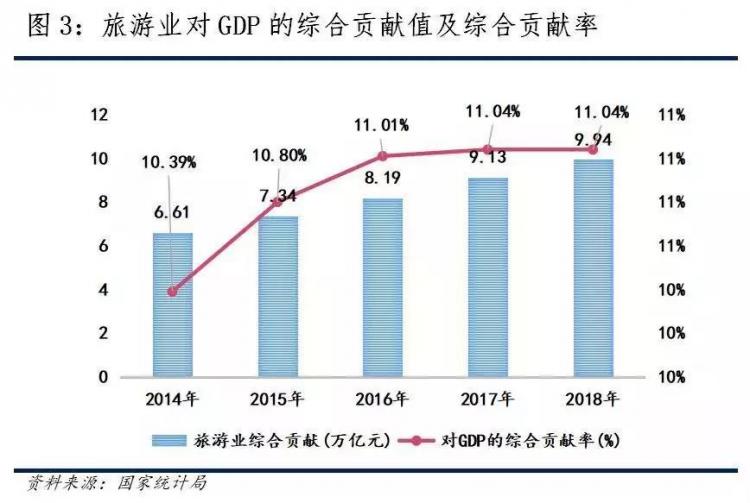
(2) “Cultural Tourism for the New Year” has become a new folk custom
Cultural and leisure consumption is more active. During the Spring Festival in 2019, according to the “Survey on Chinese Urban and Rural Residents’ Willingness to Travel” carried out by the Data Center of the Ministry of Culture and Tourism on 60 sample cities across the country, it is estimated that 85.95% of Chinese residents’ willingness to travel in the first quarter of 2019, the proportion of people who choose to travel during the Spring Festival is relatively high. High, tourism has become a new folk custom for residents during the Chinese New Year.
During the Spring Festival, 40.5%, 44.2%, 40.6% and 18.4% of tourists visited museums, art galleries, libraries, science and technology museums, and historical and cultural blocks, and 34.8% of tourists watched various cultural performances. And during the Spring Festival, the per capita spending of tourists on cultural tourism is between 501 yuan and 1,000 yuan, accounting for 41.25%; spending 301 yuan to 500 yuan is next, accounting for 38.28%.
Young people have a preference for cultural landscapes. The China Tourism Academy found that online ticket purchases for cultural landscapes during the 2019 Spring Festival increased by 15.9% year-on-year. Among them, the online purchase of tickets for historical relics, old houses of celebrities, religious temples and red tourist areas increased by 12.1%, 68.1%, 26.8% and 78.5% respectively year-on-year.
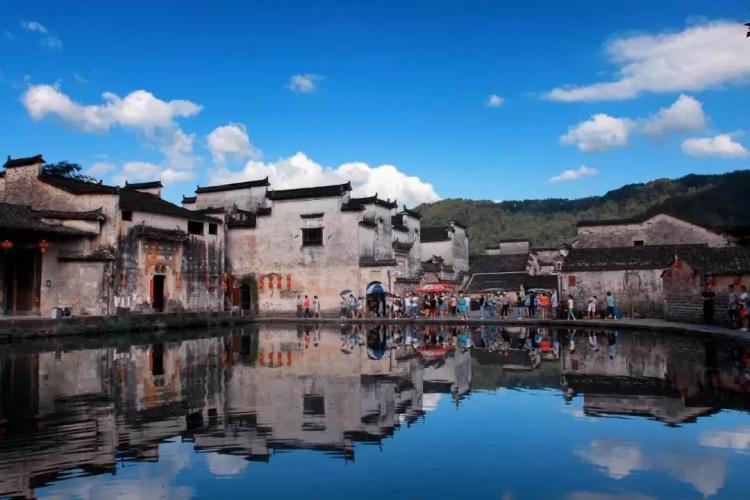
(3) The integration of culture and tourism is conducive to promoting industrial investment
Tourism employment stock and fixed asset investment still maintain a growth trend, and investment mergers and acquisitions related to the integration of culture and tourism continue to emerge. The Huangshi Tourist Resort with a total investment of more than 10 billion yuan landed in Bazhong, Sichuan, and OCT acquired an 80% stake in Jianmen Tourism for 480 million yuan. Internet companies represented by Meituan Dianping have begun to strategically enter the tourism industry while serving the basic necessities of life of local residents. In the integration and development process of “culture +” and “tourism +”, commercial technologies such as big data, cloud computing, and artificial intelligence will transform more urban and rural residents’ leisure resources into cultural and tourism products that the masses love.
Under the new normal, investment growth in most industries has slowed down, but investment in the tourism industry has grown against the trend, attracting cross-border investment and large-scale entry from government investment and financing platforms, private enterprises, and non-tourism enterprises. Tourism has become a hot spot for social investment and an engine industry for comprehensive development. According to data from the China Tourism Investment Project Database, the number of tourism projects listed in 2017 was 14,512, and the actual completed investment was 1.5 trillion yuan, an increase of 15.41% over the previous year. It is expected to reach 2 trillion yuan by 2020. The scale of national tourism investment is constantly expanding, the investment structure is gradually improving, and the formation of investment hotspots is accelerating.
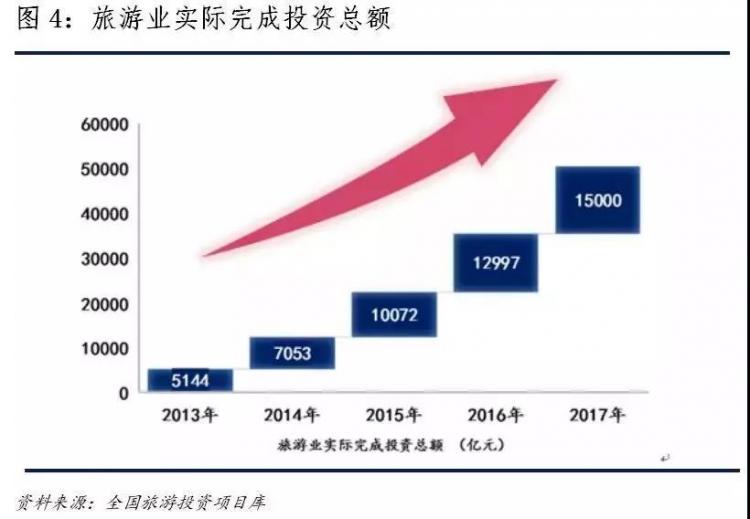
Comparing the data of previous years, it is found that from 2013 to 2017, the investment growth rates were 13%, 37%, 43%, 29%, and 15%, respectively. After the brutal growth from 2014 to 2016, tourism investment tends to return to rationality. In addition, the growth rate of tourism investment is significantly higher than the growth rate of tertiary industry and fixed asset investment and the growth rate of national fixed asset investment.
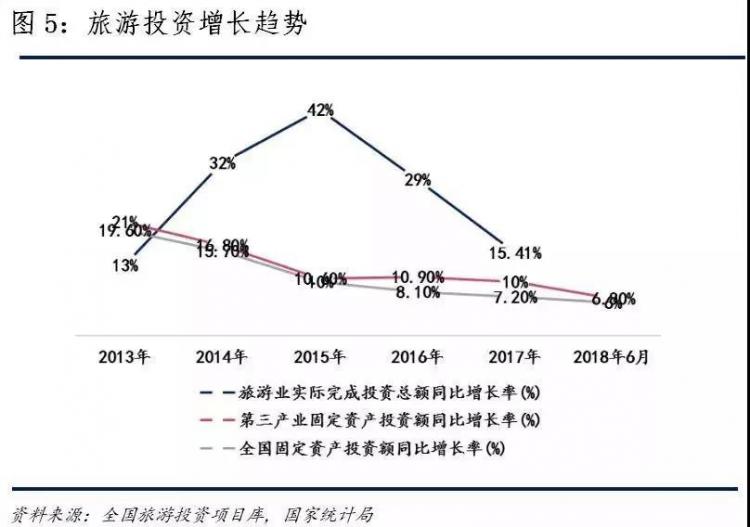
(4) Private capital has become the main investment force in the tourism industry
As the leading industry of my country’s opening up, my country’s tourism industry has accelerated the promotion of tourism elements to fully open to social capital, and private capital has become the main force of investment in my country’s tourism industry.
In terms of investment subjects, private capital investment accounts for 60%, and my country’s tourism investment still continues the multi-subject investment pattern of private capital as the mainstay, government investment and state-owned enterprise investment as supplementary. Among the total investment, private enterprises account for the highest investment, mainly investing in large-scale comprehensive cultural tourism projects; the government and state-owned enterprises have a relatively high proportion of investment in tourism in the western region, and their investment is relatively concentrated in tourism infrastructure, public service facilities and tourism. Village projects.
For example, during the 2018 Shanxi Provincial Tourism Development Conference, the province signed a total of 35 tourism projects with a total amount of 109.093 billion yuan; “Fresh Fujian” tourism investment and financing cooperation and major project promotion activities launched 208 tourism investment projects with a total investment More than 320 billion yuan; in 2018, Qingdao City confirmed that there were 110 tourism projects under construction, to be built, and under discussion with a single investment of more than 50 million yuan, with a total investment of more than 350 billion yuan; a total of 110 tourism projects were signed at the centralized signing ceremony of major tourism investment projects in Chongqing There are 35 tourism projects with a total investment of 235.7 billion yuan; 17 cultural and tourism projects in Beihai City have been signed collectively with a total investment of 134 billion yuan.
The cultural tourism industry has also become a booster to promote urban development and urban upgrading. And this has also attracted quite a few companies to enter the cultural tourism market, trying to get a share of this round of wind.
(3) Development stage of cultural tourism industry

02 Favorable policy solution continuous release
The government effectively promotes the development of cultural tourism
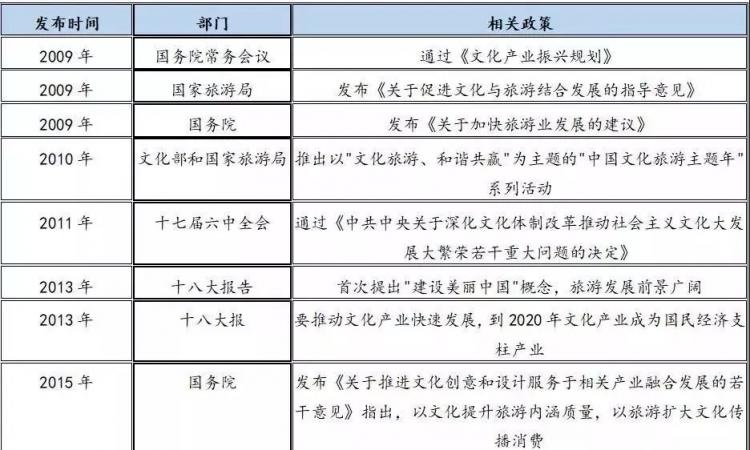
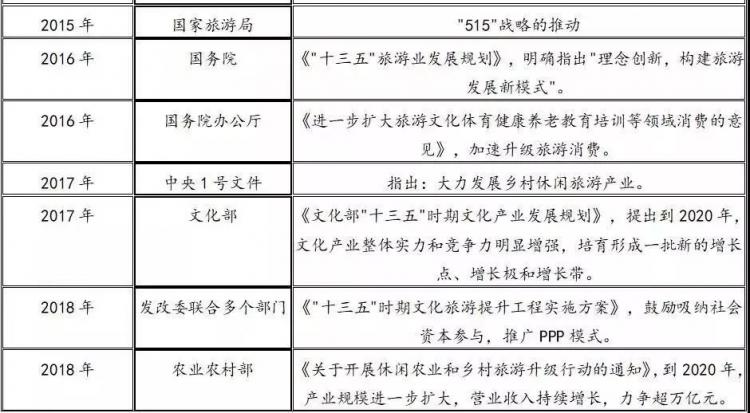
▲Summary of policies related to the cultural tourism industry
(1) Innovation Policy Supply
The “Thirteenth Five-Year Tourism Development Plan” has been raised to the national level, “Several Opinions of the General Office of the State Council on Further Promoting Tourism Investment and Consumption”, “Several Opinions on Deeply Promoting Agricultural Supply-side Structural Reform and Accelerating the Cultivation of New Momentum for Agricultural and Rural Development “, “Guiding Opinions on Accelerating the Construction of Beautiful and Characteristic Small (City) Towns”, “Several Opinions on Deeply Promoting the Construction of New Urbanization”, “Opinions on Further Stimulating the Vitality of Investment in Social Sectors”, “On Supporting Tourism Land Use Policies “Several Opinions on Promoting the Development of Self-driving and Lodging Vehicle Tourism”, “Notice on the Implementation of Major Tourism and Leisure Projects”, “Guiding Opinions on Vigorously Developing Sports Tourism”, “Several Opinions on Promoting the Integrated Development of Transportation and Tourism”, etc. Favorable policies for tourism development have been issued frequently, providing a good policy environment for tourism investment.
(2) Increase fiscal guidance funds
In terms of tourism development funds, the Ministry of Finance clarified that the budget for tourism development funds to subsidize local projects in 2018 is 1.46 billion yuan, which is a significant increase compared with 1.18 billion yuan in 2017. In addition, the Ministry of Finance also issued a budget of 21 million yuan for the 2018 Tourism Development Fund to subsidize local projects for the Finance Bureau of Xinjiang Production and Construction Corps, with a total budget of nearly 1.5 billion yuan. Fiscal funds leverage social investment effect is remarkable.
(3) Promoting private capital investment in tourism
The National Tourism Administration has held the China Tourism Investment and Financing Promotion Conference for two consecutive years, and awarded the “Outstanding Contribution Award to China’s Tourism Industry” to private entrepreneurs who have invested more than 10 billion yuan in China’s tourism industry. Promote China Tourism Group to take the lead in setting up a China Tourism Industry Fund with a total scale of 50 billion, and encourage provinces and cities to set up tourism industry investment funds. Signed a strategic cooperation agreement with 12 financial institutions including China Development Bank. During the “13th Five-Year Plan” period, it will provide 2.1 trillion yuan of credit support for the development of the tourism industry. Jointly launched 1,397 national preferred tourism projects with 12 financial institutions, with a total investment of 1.6 trillion yuan, and a total approved loan amount of 104 billion for the selected projects. Difficulties in financing tourism projects have been alleviated.
03 Development trend of cultural tourism industry
(1) The tourism economy has entered a new era of integration of culture and tourism
2018 is the first year of the integrated development of culture and tourism, and the environment for tourism development continues to be optimized. The government work report at the beginning of the year regarded the growth of outbound tourism as a huge achievement in improving people’s livelihood, released positive signals to encourage consumption, deployed key tasks such as promoting the toilet revolution, creating a global tourism demonstration zone, and reducing ticket prices for key state-owned scenic spots. The reform is progressing smoothly, and a multi-departmental joint promotion of tourism development has been formed. The number of national tourists maintained a double-digit growth throughout the year, holiday tourism consumption has become a new folk custom, cultural participation in the tourism process has increased significantly, and red tourism has achieved rapid development.
The tourism economy will enter a new era of cultural and tourism integration and a new channel of prosperity and development. Domestic tourism will continue to grow, outbound tourism will grow steadily, and inbound tourism will develop steadily. Industrial operations will maintain a booming level, tourism investment will remain high, and tourism employment will increase steadily. The development of my country’s tourism industry in 2019 will be highlighted as: there is a willingness to consume, but more cautious consumption decisions; there is a willingness to innovate, but operating costs are higher; there are promotion policies, but it is more difficult for the market to “feel”; there is a general direction of integration, However, the path and subject need to be further clarified; there is a cooperation mechanism, but the uncertainty has increased significantly.
Taking into account the development environment at home and abroad and the development trend of the tourism industry, we are generally optimistic about the tourism economy in 2019. The Ministry of Culture and Tourism predicts that in 2019, the number of domestic tourists will be 6.06 billion, and domestic tourism revenue will be 5.6 trillion yuan, an increase of 9.5% and 10% respectively over the previous year. The number of inbound tourists was 143 million, and the international tourism revenue was 129.6 billion US dollars, an increase of 1% and 2% respectively over the previous year. The number of residents traveling abroad was about 166 million, an increase of 11% over the previous year. The total tourism revenue for the year was 6.52 trillion yuan, a year-on-year increase of 9.3%.
In 2019, the integrated development of culture and tourism needs to promote the development of high-quality tourism through supply-side reforms and continuously enhance tourists’ sense of gain. Expand the development space of tourism economy with culture, and enhance the efficiency of cultural services with tourism. Continue to strengthen the cultivation of cultural and tourism market players and optimize the business environment. At the same time, efforts will be made to promote basic theoretical research on the integrated development of culture and tourism, and strengthen the data support for industrial development.
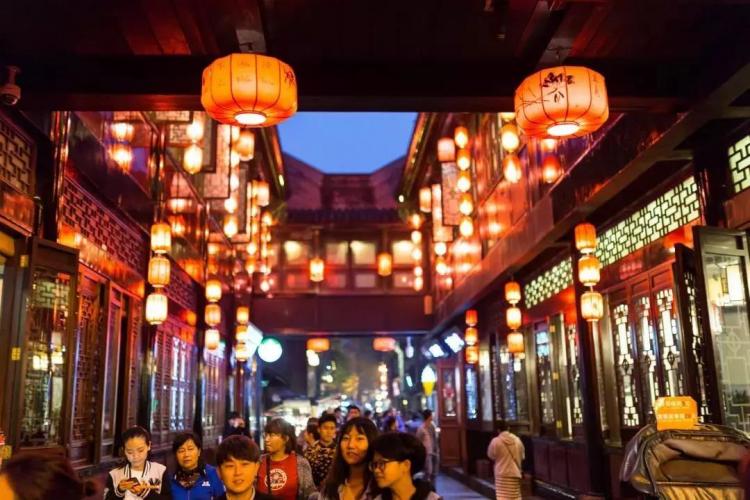
(2) The demand of tourists tends to be personalized, and the new model solves the mismatch between supply and demand
The demand is developing towards experience and subdivision, and promotes the reform of the supply side of the industry.
From the perspective of demand, tourist groups have different consumption needs due to their different age groups, giving birth to various market segments. Young people born in the 1980s lead the consumption demand for outbound travel and self-guided tours, which has led to the development of non-standard accommodation; middle-aged people born in the 1970s and 1980s prefer high-frequency short-distance consumption experience, and the demand for self-guided tours around the Internet is strong; The market prospects for cruise tours and medical tours are broad.
From the perspective of the supply side, there is a mismatch between supply and demand in the supply side of my country’s tourism industry, which is specifically reflected in the fact that well-known scenic spots are overcrowded and the supply exceeds demand, while general scenic spots are operating poorly and resources are idle. At the same time, the needs of tourists are gradually diversifying and focusing on personalized experience, and the trend of avoiding tourist peak tourist attractions during holidays is becoming increasingly prominent.
In terms of outbound tourism, the tourism mode has also changed from “shopping tour” and “sightseeing tour” to “theme tour” and “in-depth tour”. Tourism items such as “island tour” and “medical tour” are growing rapidly. Upgrading content and cross-border integration provide an effective path to solve the current situation, and models such as “tourism +” and “global tourism” have emerged as the times require.
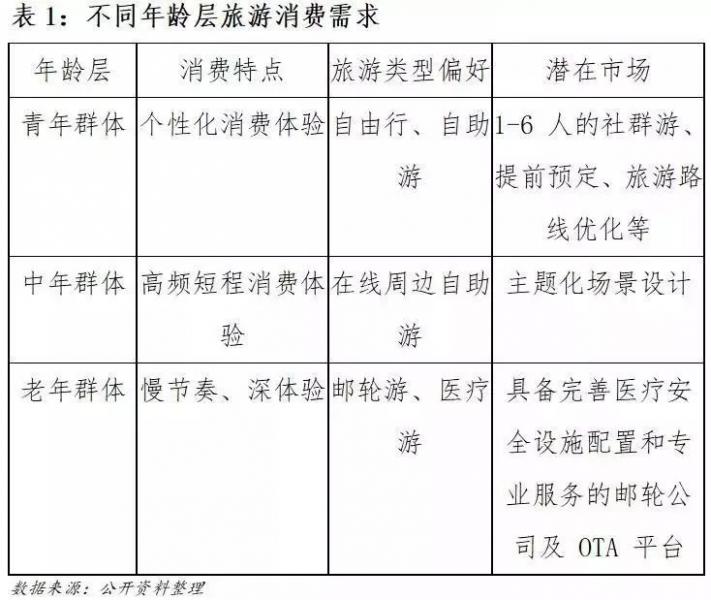

(3) The overall transformation and upgrading of the tourism industry chain, ushering in a new stage of openness and integration
The tourism industry chain consists of three links: tourism resource supply, integrated distribution of tourism products, media and marketing, and is currently gradually realizing overall transformation and upgrading. Upstream scenic spots: The traditional ticket economy has encountered a ceiling, and attention should be paid to the development of themes and the integration of surrounding resources. The upstream of the industrial chain is composed of resource suppliers such as scenic spots, transportation, accommodation, shopping, entertainment, etc., among which scenic spots are at the core. At present, most of my country’s tourist attractions are based on the business model of “constructing areas around the scenery and setting up gates to collect tickets”, which is heavily dependent on ticket revenue. In order to attract tourists’ attention, deepen their memory, and cultivate the brand of scenic spots, many scenic spots across the country have broken through the traditional conventional copying mode in the context of industrial transformation, seeking to upgrade and innovate tourism products. For example, Huaqiang Fantawild develops cultural and technological theme parks with high-quality content and consumer-grade VR technology, and has become one of the few companies operating the entire industry chain of “high-tech theme parks + cultural entertainment” in China. It is recommended to pay attention. In addition, in order to unleash the consumption potential of tourists and enrich revenue channels, each scenic spot integrates the elements of the entire industrial chain such as “food, accommodation, transportation, shopping and entertainment” in the surrounding areas through its own capabilities or through cooperation with online Internet platforms, to create a scenic spot as the core. Industrial agglomeration area.
Source Shengfang Business School




